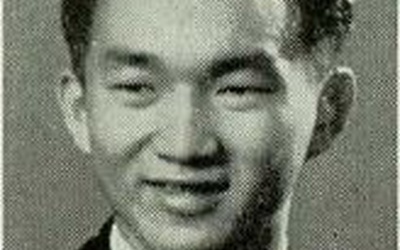Internment of Japanese Americans on Angel Island during World War II

Angel Island Immigration Station Foundation (AIISF), thanks in large part to a grant from the Japanese American Confinement Sites program of the National Park Service, has researched the story of the 700+ Americans of Japanese descent who were arrested by the FBI in Hawaii and the West Coast after Pearl Harbor and spent some time on Angel Island. AIISF’s webpage with more history is online. The immigration station processed about 85,000 Japanese immigrants from 1910 to 1940, but during World War II was a temporary internment facility operated by the Army’s Fort McDowell. Most internees spent three weeks or fewer on the island. From there, the internees were sent to Department of Justice and US Army camps such as Missoula, Montana; Fort Sill, Oklahoma; and Lordsburg and Santa Fe, New Mexico.
This series includes stories of internees with information from their families and the National Archives and Records Administration in College Park, MD. If you have information to share about former internees, please contact AIISF at info@aiisf.org.
Stories from this series
George Hishida – A Life in Photography Interrupted by World War II
March 26, 2015 • Grant Din
George Mioya Hishida was born in Fukushima, Japan, in 1896 to a Christian missionary father who was absent from the family for long periods of time. He had two brothers and two sisters, and after graduating high school in 1913, he immigrated through Seattle and then went to Los Angeles to join his oldest brother. The brothers then worked in Salt Lake City, Utah, where his brother worked on the railroad and George worked as a sugar beet contractor and …
Takeo Akizaki: American Citizen Detained Twice on Angel Island During World War II
March 17, 2015 • Grant Din
Takeo Akizaki was one of nineteen men detained on Angel Island from August 5 to 7, 1942. This group was composed of men from Hawai`i, and according to Yasutaro Soga, all were U.S. citizens. Akizaki, who had also been detained on the island in March of that year on his way to Department of Justice camps, became a Shinto priest, and his beliefs were instrumental in his detention in these camps for most of the duration of World War II. …





